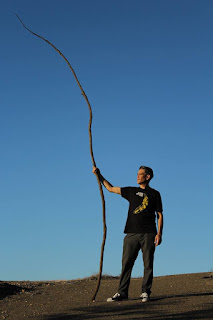The Swallowing of Propaganda Disguised as Theory and Activism in Education
First, by no means am I saying that all instructors are indoctrinating their students. Nor am I disregarding social practice, theory, or activism in art education. These subjects are crucial, now more than ever, and are integral in my own work as an artist.
I do, however, have issues with the hierarchical and presumptuous approach to teaching these genres in art education. What seems to be an increasingly common practice. Oftentimes, art school instructors have the assumption that their students are like clay. That they need to be formed in a particular way, for their own benefit, and that of the greater good. The classroom, for them, represents more of a social/political or religious soap box. In which the instructor, performs the part of master guru, embarking on a predetermined campaign to influence and persuade their audience. The students themselves are taken for granted, dismissed, objectified, left unchallenged and undirected.
This method of conditioning and/or reeducation is commonly practiced by art moguls and aspiring art stars. The university, has become, for many, a platform institution for cultural class climbing and global recognition. So many art educators don’t really want to teach and would rather be frolicking with their fellow elitists. Sadly, many of these masters, believe their presence alone equates to something meaningful. This narcissistic view is typical at all levels of education. Especially, for some educators at state schools and low-income areas. I suppose, “fine” art in itself, fosters this kind of posturing.
Teaching these subjects from a position of authority alone, rather than a point of open investigation. Results in a gaping void, consuming any possibility for discourse or productivity. The students are not there to be taught “how to think”. Each and every student has a potential contribution to their class and their instructors. Any educator that really wants to be there, knows this is the case and benefits from the fruits of critique.
To often, art students are mislead into duplicating their mentors motivations. You can see this literally, in the visual art produced by so many students influenced by their instructors. A student show where all the work looks the same and embodies all of the instructors methods and concerns. In particular trends of painting that seems to emerge over and over again.
An effective instructor, guides their students to develop and discover their voice. Especially, if it is in contrast to their own. In theory and social practice that would begin with a survey of what has been done. Of course, this can and should include the instructors work, as well as possible demonstrations. Followed by in-depth discussion and critique of the material and the student’s work. The entire class should challenge each other and critically examine whatever theories presented. But, it is the student who must determine, why they make art, what that means, and for whom they are making it.
I do, however, have issues with the hierarchical and presumptuous approach to teaching these genres in art education. What seems to be an increasingly common practice. Oftentimes, art school instructors have the assumption that their students are like clay. That they need to be formed in a particular way, for their own benefit, and that of the greater good. The classroom, for them, represents more of a social/political or religious soap box. In which the instructor, performs the part of master guru, embarking on a predetermined campaign to influence and persuade their audience. The students themselves are taken for granted, dismissed, objectified, left unchallenged and undirected.
This method of conditioning and/or reeducation is commonly practiced by art moguls and aspiring art stars. The university, has become, for many, a platform institution for cultural class climbing and global recognition. So many art educators don’t really want to teach and would rather be frolicking with their fellow elitists. Sadly, many of these masters, believe their presence alone equates to something meaningful. This narcissistic view is typical at all levels of education. Especially, for some educators at state schools and low-income areas. I suppose, “fine” art in itself, fosters this kind of posturing.
Teaching these subjects from a position of authority alone, rather than a point of open investigation. Results in a gaping void, consuming any possibility for discourse or productivity. The students are not there to be taught “how to think”. Each and every student has a potential contribution to their class and their instructors. Any educator that really wants to be there, knows this is the case and benefits from the fruits of critique.
To often, art students are mislead into duplicating their mentors motivations. You can see this literally, in the visual art produced by so many students influenced by their instructors. A student show where all the work looks the same and embodies all of the instructors methods and concerns. In particular trends of painting that seems to emerge over and over again.
An effective instructor, guides their students to develop and discover their voice. Especially, if it is in contrast to their own. In theory and social practice that would begin with a survey of what has been done. Of course, this can and should include the instructors work, as well as possible demonstrations. Followed by in-depth discussion and critique of the material and the student’s work. The entire class should challenge each other and critically examine whatever theories presented. But, it is the student who must determine, why they make art, what that means, and for whom they are making it.
Image from The Roof is on Fire (1993-1994) Suzanne Lacy, Annice Jacoby, and Chris Johnson


Comments
Post a Comment